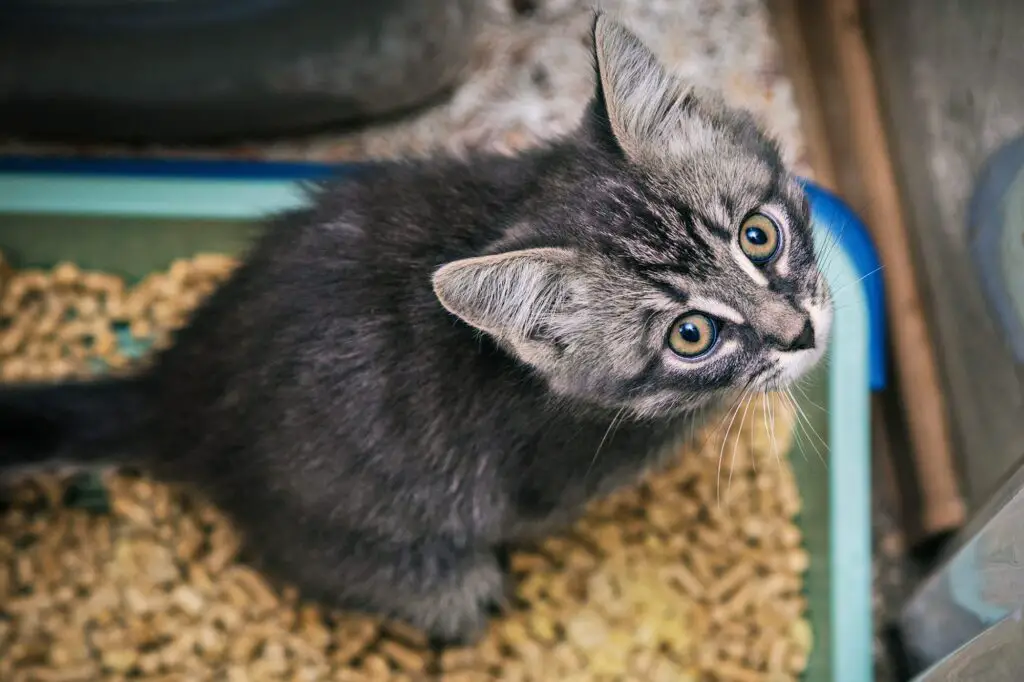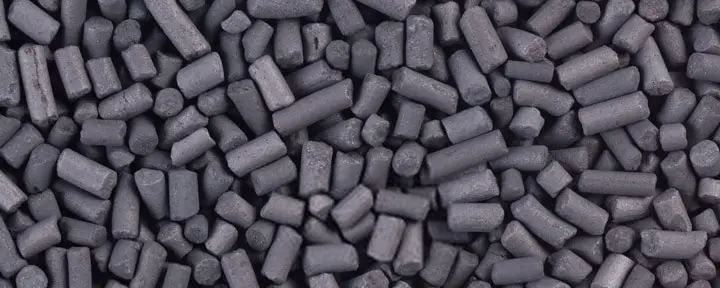Cat owners love their feline companions but can all agree on one thing: the smell of a litter box can be a persistent nuisance. Activated charcoal, a natural, powerful, and safe odor control solution, has become a go-to remedy. This guide provides a deep dive into why activated charcoal is the best option, how it works, and practical tips for maximizing its effectiveness.

Why Does Cat Litter Smell So Bad?
Cat litter odor is primarily caused by:
- Ammonia: Found in cat urine, ammonia emits a sharp, unpleasant smell as it decomposes.
- Bacteria: Organic waste and moisture create a breeding ground for odor-causing bacteria.
- Feces: Decomposing feces adds to the unpleasant smell.
Understanding these culprits helps in choosing the right odor-control strategy.
Traditional Odor Control Methods: Pros and Cons
1. Deodorizers
- How They Work: Deodorizers mask odors with artificial scents.
- Limitations:
- Temporary effectiveness.
- May contain chemicals harmful to pets.
- Often fail to neutralize odors at the source.
2. Baking Soda
- How It Works: Absorbs some odors by neutralizing acidic compounds.
- Limitations:
- Less effective against strong smells.
- Overuse can alter the texture of litter, making it less comfortable for cats.
3. Enzyme-Based Products
- How They Work: Break down organic compounds in waste.
- Limitations:
- Require regular application.
- Expensive compared to alternatives.
- May not tackle odors from dry waste effectively.
4. Non-Activated Charcoal
- How It Works: Absorbs some odors but lacks the efficiency of activated charcoal.
- Limitations:
- Limited surface area for odor absorption.
- Shorter lifespan for odor control.
What Makes Activated Charcoal Special?
Activated charcoal is made by treating carbon-rich materials (like coconut shells or bamboo) at high temperatures. This process creates a porous structure, giving it an enormous surface area for trapping odor molecules. Just one gram of activated charcoal can have a surface area of over 3,000 square meters!

Key Features:
- High Adsorption Capacity: Effectively traps ammonia, sulfur compounds, and organic odors.
- Non-Toxic and Safe: Suitable for cats and humans.
- Environmentally Friendly: Biodegradable and chemical-free.
How Activated Charcoal Works to Eliminate Odors
The secret lies in its porous structure:
- Adsorption Process: Odor molecules bind to the surface of the pores in the charcoal.
- Continuous Absorption: Activated charcoal keeps working until all pores are filled, making it a long-lasting solution.
- Broad Effectiveness: Tackles both gaseous and particulate odors, unlike other methods.
Choosing the Right Activated Charcoal Products
Commercial Cat Litters with Activated Charcoal
Many premium cat litters now incorporate activated charcoal for odor control. Examples include:
- Fresh Step Ultra Unscented Cat Litter: Combines activated charcoal with clumping technology to lock in odors and moisture.
- Arm & Hammer Clump & Seal: Contains activated charcoal and baking soda for dual-action odor elimination.
Activated Charcoal Additives
For those who prefer DIY solutions, activated charcoal is available as:
- Loose Granules: Can be mixed with litter for enhanced odor control.
- Charcoal Sachets: Placed around the litter box to absorb ambient odors.
Reusable Charcoal Bags
These eco-friendly options last up to 2 years. Simply recharge them by placing them in the sun for a few hours every month.
How to Use Activated Charcoal for Maximum Effectiveness
- Mix with Cat Litter:
- Add a thin layer of activated charcoal granules to the bottom of the litter box.
- Mix it evenly with your preferred cat litter.
- Use Charcoal Sachets or Bags:
- Place sachets near the litter box to control ambient odors.
- Replace sachets every 2-3 months or recharge reusable ones as needed.
- Replace Regularly:
- While activated charcoal is long-lasting, replace or recharge it every 1-2 months for best results.
Additional Tips for Managing Cat Litter Smell
1. Maintain a Regular Cleaning Routine
- Scoop waste daily to prevent the buildup of ammonia and bacteria.
- Deep-clean the litter box weekly with a mild, pet-safe cleaner.
2. Ensure Proper Ventilation
- Place the litter box in a well-ventilated area to reduce stagnant air and odor accumulation.
- Avoid enclosed litter boxes unless they include ventilation or charcoal filters.
3. Optimize Your Cat’s Diet
- Feed your cat a balanced diet to reduce waste odor. Consult a veterinarian for recommendations.
4. Use Multiple Litter Boxes
- If you have more than one cat, use at least one litter box per cat to distribute waste and odors.
What Experts Say About Activated Charcoal for Odor Control
Veterinary experts emphasize the safety and efficacy of activated charcoal. Dr. Linda Rogers, a veterinary toxicologist, states, “Activated charcoal is a safe and reliable solution for odor management in multi-cat households. Its natural properties make it an ideal choice for health-conscious pet owners.”
A 2023 study on odor adsorption capabilities of activated carbon found it reduced ammonia concentrations by 85% in enclosed spaces, confirming its effectiveness.
Why Activated Charcoal Is the Best Solution
- Cost-Effective: Although the initial investment may be higher than traditional methods, its longevity makes it a cost-effective solution.
- Long-Term Freshness: Unlike deodorizers that mask odors temporarily, activated charcoal neutralizes odors at the source.
- Eco-Friendly: A sustainable choice for environmentally conscious pet owners.
Frequently Asked Questions
1. Is activated charcoal safe for cats? Yes, activated charcoal is non-toxic and safe for both cats and humans.
2. How often should I replace activated charcoal? Replace granules or sachets every 1-2 months, or recharge reusable bags monthly.
3. Can I use activated charcoal with any type of litter? Yes, activated charcoal is compatible with clumping, non-clumping, and natural litters.
Conclusion
Activated charcoal is a game-changer for managing cat litter odor. Its high adsorption capacity, safety, and long-lasting effectiveness make it the ultimate choice for odor control. By incorporating activated charcoal into your litter box routine and following best practices, you can enjoy a fresher, more pleasant home environment for both you and your feline companion. Whether you opt for charcoal-infused cat litter, DIY solutions, or reusable charcoal bags, this natural remedy ensures your house remains odor-free without compromising on safety or sustainability.
